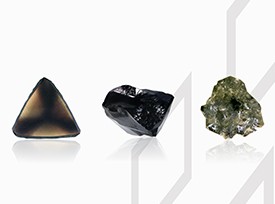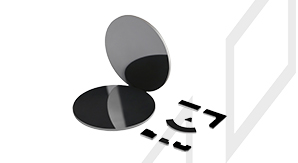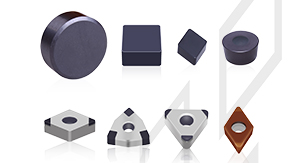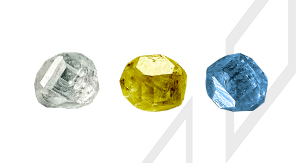Metal bond CBN grinding wheel has the advantages of high strength, good toughness, good thermal conductivity and long service life. According to the different metal elements and alloy composition of the bond, the sintered metal bond can be divided into copper-based, cobalt-based, titanium-based and iron-based categories.
Copper-based bond can make CBN grinding wheel both hardness and brittleness. With the development of industrial technology, cobalt-based bond has been used. Cobalt-based bond has the advantages of high hardness, low sintering temperature, good toughness and good wear resistance, but cobalt has certain toxicity. In the list published by the World Health Organization, cobalt and cobalt compounds belong to grade 2B carcinogens, so from the point of view of environmental protection, committed to the study of cobalt-free high-performance bond. Iron-based bond can produce high-performance grinding tools and can replace cobalt-based bond. The alloy formed by iron and other metals can greatly improve the properties of matrix. Under the hot-pressing sintering process, the densification temperature of iron-based bond is lower than that of cobalt-based, and the cost can be saved.
Metal bond CBN grinding wheel keeps CBN abrasive cutting sharpness for a long time when working, and new and smaller sharp abrasive will be formed when CBN abrasive breaks. The cutting edge density of CBN abrasive is dynamically stable, and the grinding wheel is kept in a sharp state. This phenomenon is the self-sharpening of grinding wheel, while the sharpness and performance index of alumina abrasive is worse than that of CBN. Therefore, the life of metal bond CBN grinding wheel is longer than that of alumina abrasive grinding wheel.
When the metal bond CBN grinding wheel is grinding the workpiece under high pressure and high speed, the bond at the joint of the CBN abrasive and the bond is easily eroded by the debris, which gives a larger space for the existence of the debris and greatly promotes the discharge ability. With the deepening and widening of the groove, it can accommodate more chips. At the same time, debris enables the self-sharpening of the grinding wheel to continue. On the other hand, the abrasive in the ordinary alumina grinding wheel is wrapped by bond, which will cause the abrasive to fall off when the chip is formed.
When the metal bond CBN grinding wheel works, the cutting force of the abrasive to the workpiece is larger than that of the alumina abrasive, and the cutting depth is larger than that of the alumina; when the cutting force of the metal bond CBN grinding wheel is large and the cutting depth is large, the overall cross section of the cutting is also larger; the hardness value of CBN is large, and the wear of the chip to CBN is also small, so the CBN abrasive can maintain a good sharpness, and the CBN abrasive is still in the cutting state. Relatively speaking, the chip cross-sectional area of alumina grinding wheel is small, and the hardness of alumina abrasive is low, so alumina abrasive is in a honing state and no longer has cutting sharpness.
Although generally speaking, metal bond CBN grinding wheel has more advantages than alumina grinding wheel, and metal bond CBN grinding wheel has the advantages of high strength and high wear resistance, its biggest disadvantage is that the self-sharpening property still needs to be improved. It is found that adding vitrified, resin and graphite phases to metal bond grinding wheel can obviously improve the self-sharpening property of metal bond CBN grinding wheel. Therefore, more and more metal bonds are compounded with resins and vitrifieds to improve their properties.

CBN/DIA Superabrasive
Improve grinding efficiency to a new level
PCD Blank
Improve the comprehensive competition advantages of cutting tool manufacturer
PCBN Insert
Substantially improve cutting efficiency and tool life
HPHT Lab-grown Diamond
Protecting the environment and creating art and beauty with technology is the tireless pursuit of Funik